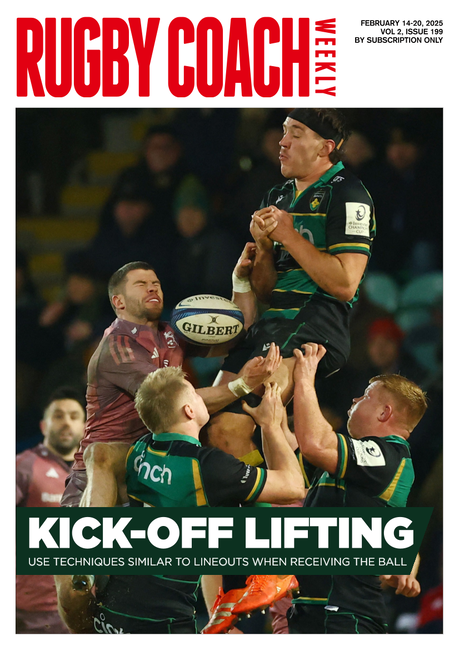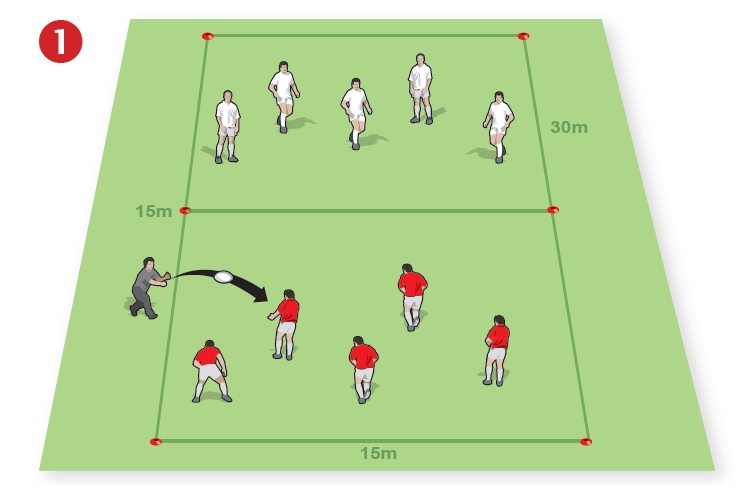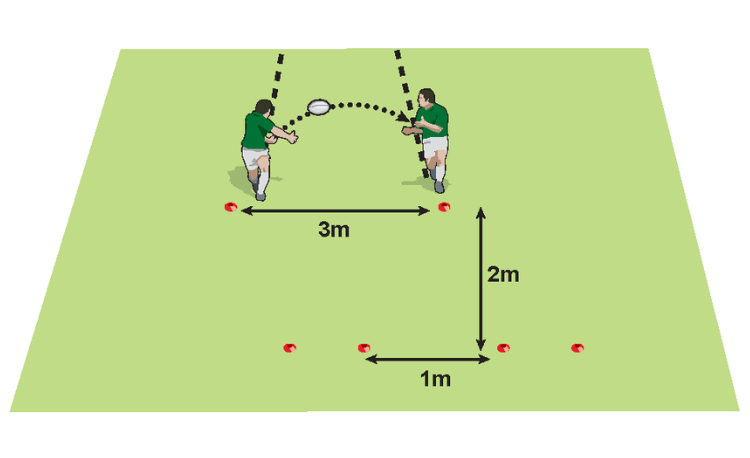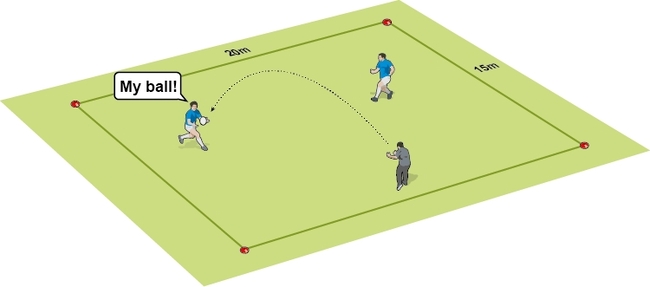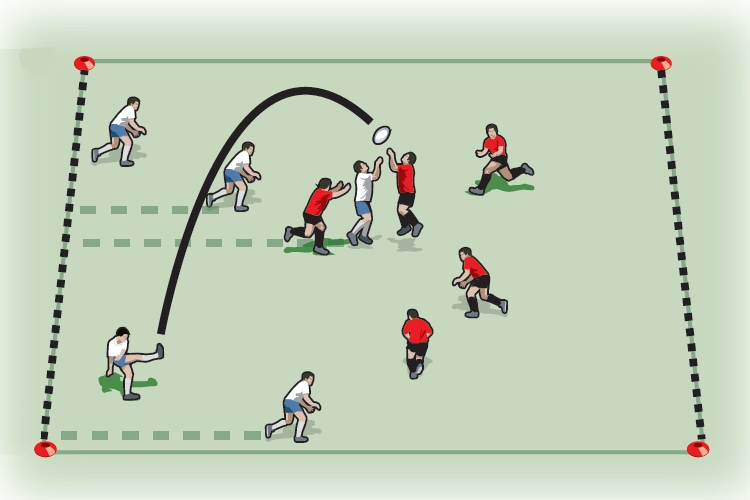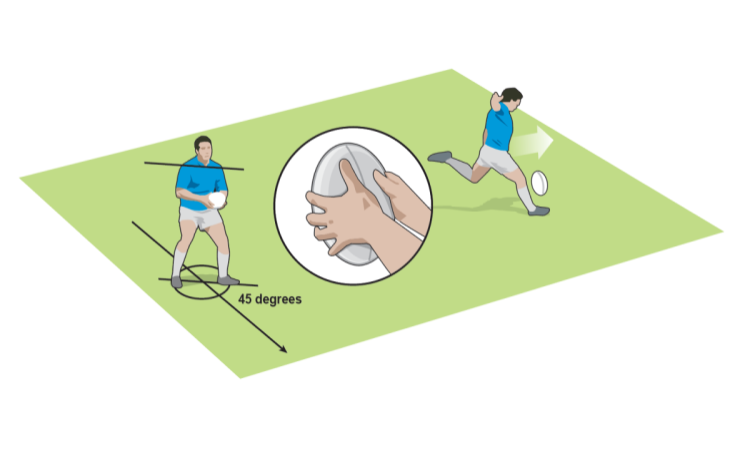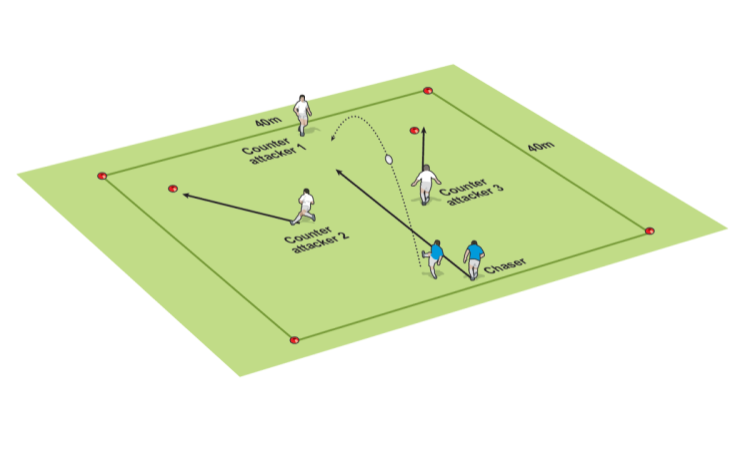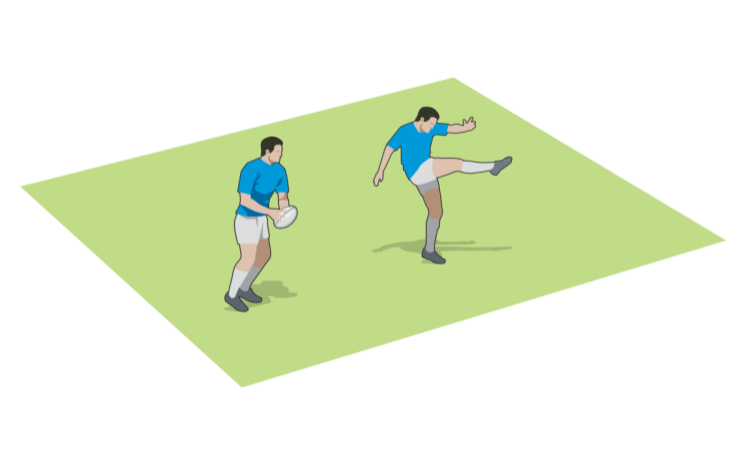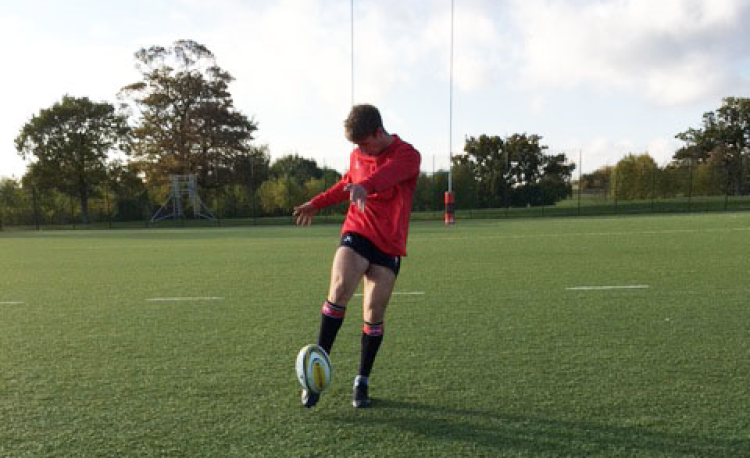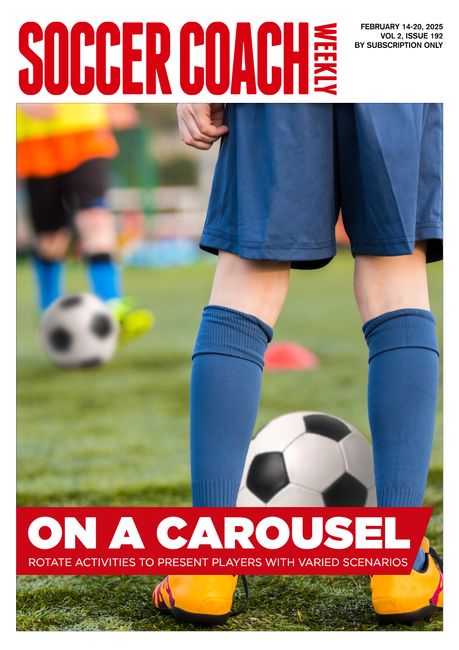Rugby coaching tips for kicking on hard ground
Hard ground features
- The ball runs further.
- The ball bounces higher.
- The ball bounces less predictably.
- Players are less inclined to dive on to the ground to gather the ball.
1. Set-piece kicking
Since you gain advantages from a bouncing ball on hard ground, it is worth exploring lower kicks than you would normally employ.
There are two areas to aim for, both with the idea of bouncing the ball in front of the back field defenders (the wingers and full back): Behind the scrum or lineout and over the centres.
With your attackers organised and ready, you should chase the ball with at least two players. This increases the chances of regaining possession against the single defender as your players can run either side of the bouncing ball.
The fly half needs to practise receiving the ball in such a way as to initially mask the kicking action. One way to do this is to have the fly half stand deeper, run on to the ball and then kick.
The low kick technique
- Strike the ball lower to the ground than normal.
- Lean forward to keep the leg movement low through the impact.
2. The rolling ball
Kicking the ball along the ground means a receiver has two options of gathering the ball – swooping or falling on it. On hard grounds, players will be more reluctant to fall on the ball, so make defenders turn and chase the ball, rather than being able to run forward to gather it.
To increase the chances of winning the chase, draw up the wide defenders by getting the centres to kick the ball. For instance, the inside centre (12) can take the ball, run sideways more than normal and then push the ball with his kick into the openside corner.
The running action of the inside centre should draw up the defence, especially the openside defending winger. The style of kick changes for turning the defenders so they have to chase the kick, with the ball being stuck in the middle so it can roll further.

3. "Drill" kicks for territory
The rugby fly half can exploit the hard ground by driving the ball into the corners of the ground.
The target area is crucial – better to kick from a wider angle to allow less margin of error. In which case your players may well employ “wiper” kicks, which are crossfield long-distance kicks.
This article is from International Rugby Coaching. Issued monthly, this journal is ideal for professional, semi-professional, senior, aspiring and experienced rugby coaches.
Newsletter Sign Up
Coaches Testimonials

Gerald Kearney, Downtown Las Vegas Soccer Club

Paul Butler, Florida, USA

Rick Shields, Springboro, USA

Tony Green, Pierrefonds Titans, Quebec, Canada
Subscribe Today
Be a more effective, more successful rugby coach
In a recent survey 89% of subscribers said Rugby Coach Weekly makes them more confident, 91% said Rugby Coach Weekly makes them a more effective coach and 93% said Rugby Coach Weekly makes them more inspired.
Get Weekly Inspiration
All the latest techniques and approaches
Rugby Coach Weekly offers proven and easy to use rugby drills, coaching sessions, practice plans, small-sided games, warm-ups, training tips and advice.
We've been at the cutting edge of rugby coaching since we launched in 2005, creating resources for the grassroots youth coach, following best practice from around the world and insights from the professional game.


